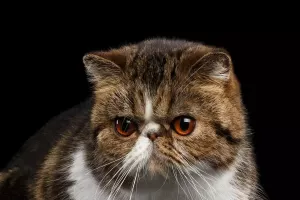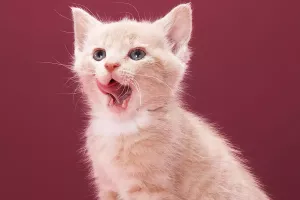In 1927, British zoologist Charles Sutherland Elton proposed the concept of food chain. After the development of different people, the food chain has become the mainstream concept to express the relationship of food composition between species. According to the roles that different organisms play in the transformation of energy and matter within the ecosystem, they are divided into three roles: producers, consumers and decomposers.
Producers derive their energy from inorganic substances such as sunlight, water, and carbon dioxide. The consumer either takes the producer as the source of matter and energy (primary consumers, namely herbivores), or takes other consumers as the source of matter and energy (secondary consumers, namely carnivores). The role of the decomposer is to feed on the corpses of consumers after they die, eventually converting organic matter to inorganic matter.
Among the sub-consumer carnivores are 9 subjects, including cats, and they are also the most thorough carnivores, ranging from the largest tigers to the petite house cats. As carnivores, all of the cat's body structure is born to eat meat. They have sharp teeth and strong jaws, a high concentration of stomach acid, and a very short intestine (a cat's intestine is only about 1 meter, and the cecum is as short as a few centimeters). These are all powerful weapons they use to hunt, obtain, and absorb animal nutrition, and they are the species that stand at the top of the food chain.
When studying the carnivorous instincts of cats, Waltham Center for Pet Nutrition in the United Kingdom found that they need at least 12.5% protein in their diets to maintain their daily needs. About 10% of the total dietary energy, which is far more than the relative value of other species, including dogs. This function makes cats highly adaptable to dietary protein content ranging from moderate (20%-35% energy) to high (52%-70% energy).
Studies have found that cats, as consumers at the top of the food chain, have an abnormally high demand for protein, which gives them another ability, which is a high sensitivity to high-protein, high-energy objects. That's right, cats naturally know what objects are likely to have higher levels of protein to meet their body's needs. So, what kind of object is more likely to be perceived by a cat as carrying more protein and more energy? The answer is living objects. They subconsciously understand that something moving is more likely to provide them with an energy source, so when they see something moving, they will pounce on it after some observation.
Cats are 10 times more capable of visual capture than humans. This is what we often see. Cats are stunned, staring at a place behind you, but you can't see anyone. In fact, maybe its goal is just to stare at a small flying insect.
Cats are very interested in moving objects and are very attached to them. Once it is fixed on a moving object, even if it cannot touch the object, it will show the action of scratching, and it must pounce when it has the opportunity. This is the cat's desire for control, and it's one of the main reasons why we often interact with them with cat-friendly sticks. This constant temptation to interact with you, and to make the cat's spirit highly concentrated, can effectively enhance the relationship between the owner and the cat.


